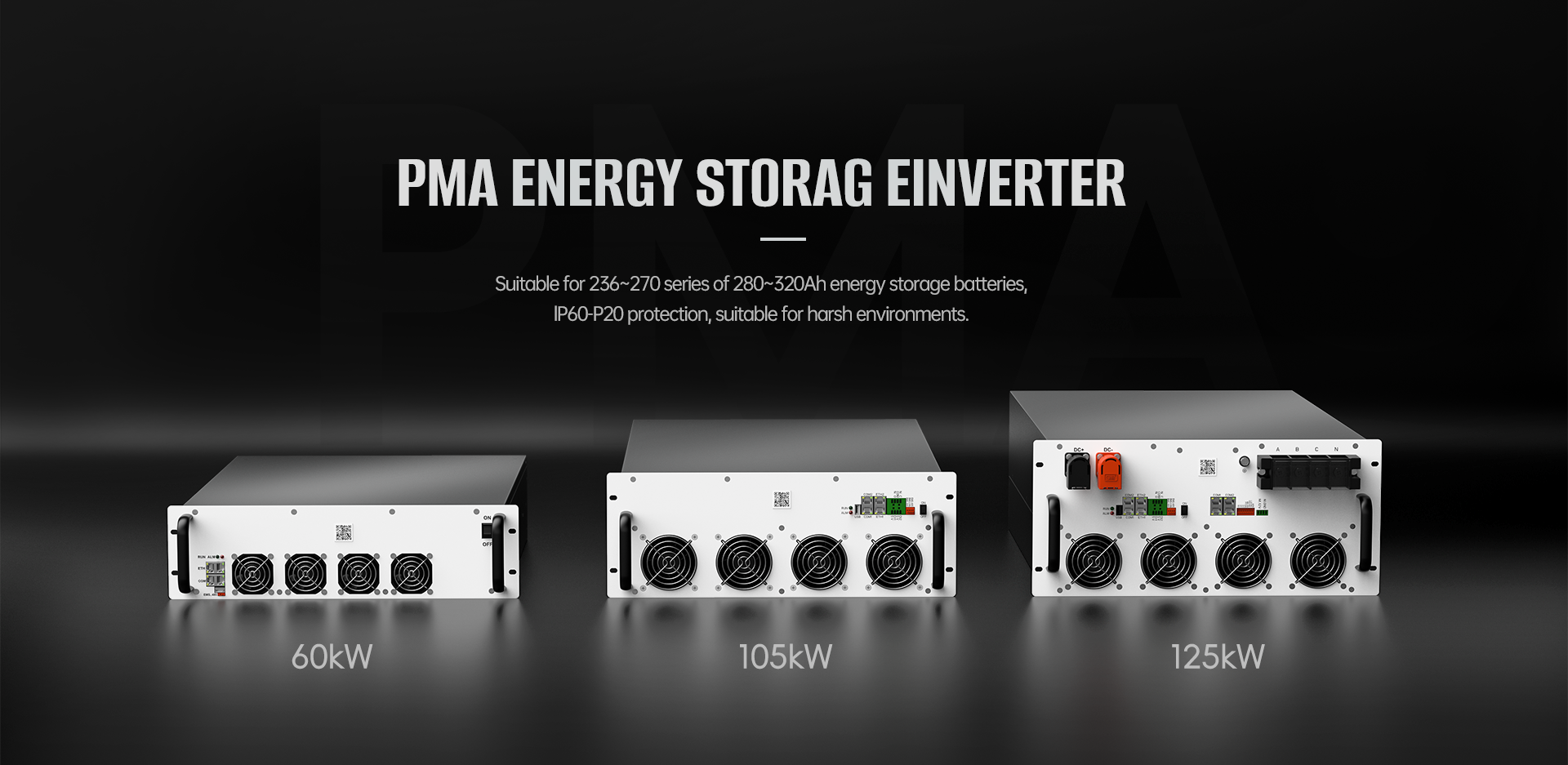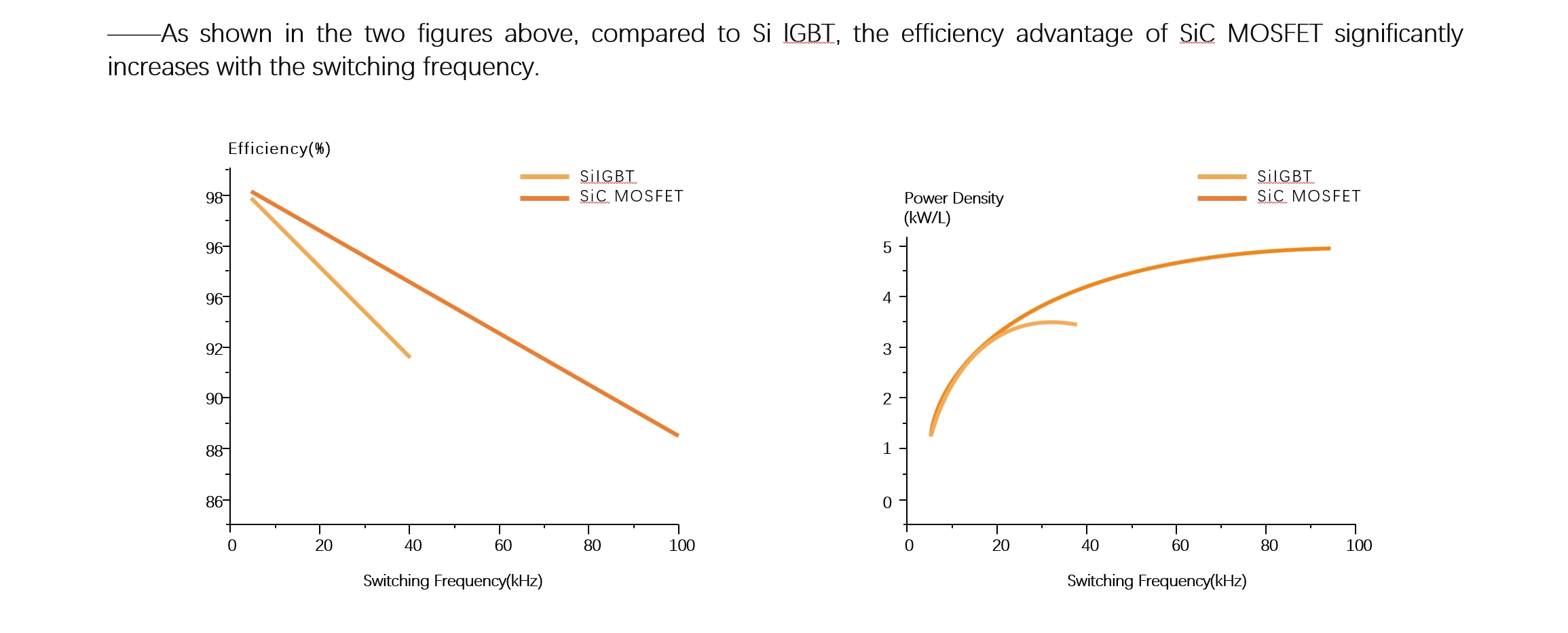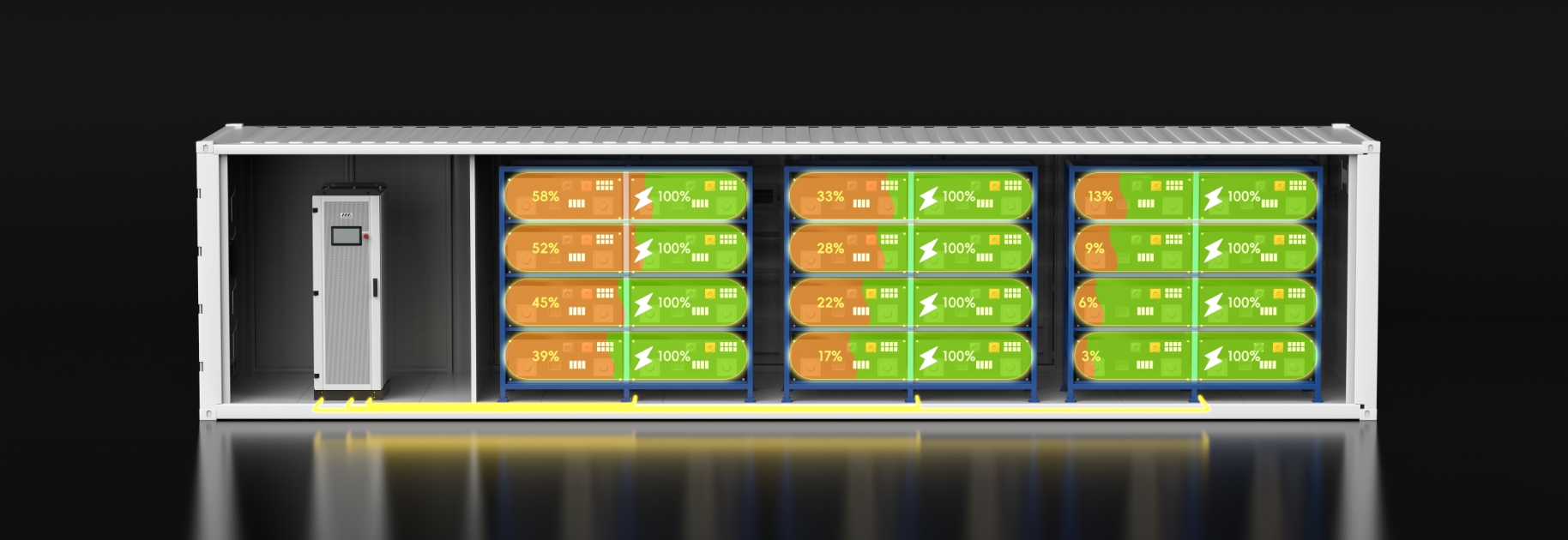

The shift from centralized systems to modular energy storage inverters has transformed the energy storage landscape. Modular designs allow for easy scalability, enabling users to expand their systems as energy demands grow. This flexibility is particularly beneficial for commercial and industrial applications, where energy needs often fluctuate. Decentralized controllers in modular systems enhance adaptability by integrating multiple assets seamlessly. These features make modular energy storage solutions ideal for dynamic environments, ensuring efficient energy management.
Digitalization has revolutionized energy storage systems by integrating IoT and cloud-based monitoring. These technologies enable real-time data collection and analytics, optimizing energy usage and reducing losses. For instance, IoT sensors identify inefficiencies in energy consumption, while cloud platforms facilitate predictive maintenance. This proactive approach minimizes downtime and enhances the overall performance of energy storage solutions. Intelligent energy management systems, powered by these advancements, ensure smarter decision-making and improved operational efficiency.
Real-time data analytics plays a crucial role in modern energy storage inverters. By analyzing consumption patterns, these systems provide actionable insights to optimize energy use. Operators can make informed decisions about when to store energy or feed it back into the grid, maximizing efficiency. This capability is particularly valuable in smart grids, where dynamic energy demands require quick adjustments. Enhanced analytics not only improve system performance but also contribute to the economic viability of renewable energy.
Energy storage inverters are essential for integrating renewable energy sources like solar energy and wind power. These inverters ensure seamless operation by managing the flow of energy between generation, storage, and consumption. Hybrid systems, which combine multiple energy sources, benefit significantly from advanced inverter designs. For example, DC coupling between batteries and inverters can improve efficiency by up to 5%. This integration supports the reliable delivery of renewable energy, even during periods of low generation.
The integration of renewable energy with battery energy storage enhances both efficiency and sustainability. Energy storage systems store excess renewable energy for later use, reducing reliance on non-renewable sources during peak demand. This capability minimizes energy losses and ensures a stable power supply. Additionally, smart energy management systems optimize the use of stored energy, further improving efficiency. These developments underscore the critical role of energy storage inverters in advancing renewable energy adoption.
Modular energy storage inverters are easy to expand. They are great for businesses with changing energy needs.
Digital tools like IoT and AI improve energy systems. They give real-time data, save energy, and lower repair costs.
Silicon carbide (SiC) tech makes inverters work better. It cuts energy waste and allows smaller, efficient designs.
Energy storage inverters help use renewable energy. They keep power steady even when energy production changes.

Silicon carbide (SiC) technology has revolutionized power conversion systems by offering significant advantages over traditional materials like silicon. SiC enables higher voltage capabilities, allowing solar farms to increase their string voltage from 1000 V to 1500 V. This advancement supports the development of more efficient and powerful energy storage systems. Additionally, SiC reduces power loss by up to 20% in hard switching applications, enhancing overall system efficiency.
Energy storage inverters utilizing SiC technology also demonstrate improved reliability in challenging environments. These systems can operate at higher temperatures and power densities, resulting in smaller and lighter designs. This compactness reduces installation space requirements and simplifies system integration. Furthermore, SiC technology contributes to cost savings by minimizing the number of inverters needed and enabling the use of smaller cable sizes. These benefits make SiC a preferred choice for modern energy storage solutions.
The adoption of SiC technology significantly improves the efficiency and thermal management of energy storage inverters. SiC-based inverters handle higher power levels with reduced energy losses, ensuring optimal performance. Their ability to operate at elevated temperatures reduces the need for extensive cooling systems, which lowers maintenance costs and enhances system reliability. For example, liquid cooling systems paired with SiC inverters can efficiently dissipate heat, ensuring stable operation even under heavy loads.
SiC's high thermal conductivity also allows for better heat dissipation, which extends the lifespan of critical components. This capability is particularly valuable in applications requiring continuous operation, such as solar farms and industrial energy storage systems. By addressing thermal challenges effectively, SiC technology ensures consistent performance and long-term durability. These advancements highlight the transformative potential of SiC in shaping the future of energy storage inverters.

Artificial intelligence (AI) is transforming energy storage systems by enabling predictive maintenance and optimizing performance. AI analyzes sensor data to detect potential failures before they occur, reducing downtime and maintenance costs. For example, in on-site energy solutions, AI-driven systems monitor battery performance to ensure reliability and operational resilience. This proactive approach enhances the lifespan of components and improves system efficiency.
AI also facilitates energy demand management by analyzing consumption patterns. It balances energy loads during peak and off-peak times, ensuring optimal usage. This capability is particularly valuable in renewable energy projects, where fluctuating generation requires dynamic adjustments. By leveraging real-time data, AI enhances the sustainability and reliability of energy storage systems.
AI-driven energy management systems optimize grid demands by forecasting electricity needs and identifying potential bottlenecks. These systems analyze energy consumption data to predict trends, allowing operators to adjust energy dispatch dynamically. For instance, AI can manage energy arbitrage by responding to fluctuating electricity prices, maximizing cost efficiency.
Smart algorithms also improve customer engagement by designing personalized energy efficiency programs. Continuous learning from new data enables AI models to refine predictions over time. These advancements make AI a critical tool for managing dynamic grid demands and supporting the integration of renewable energy sources.
Next-generation battery technologies, such as lithium-ion batteries, are driving innovations in energy storage inverters. These advanced batteries require inverters with enhanced compatibility features, including support for higher power ratings and wider voltage ranges. Communication protocols between inverters and battery management systems ensure seamless integration and optimal performance.
Inverters must also offer comprehensive monitoring and control features to manage both solar and battery systems effectively. Regular firmware updates from manufacturers ensure ongoing compatibility with evolving battery technology. These advancements enable better integration with electric vehicle infrastructure and promote the adoption of renewable energy.
Lithium-ion batteries, known for their high energy density, are revolutionizing energy storage systems. These batteries store more energy in smaller spaces, making them ideal for residential and commercial applications. Advanced modeling techniques, such as machine learning, further enhance system performance by optimizing energy usage and lifecycle management.
Improved lifecycle management reduces the environmental impact of battery disposal. Smart energy management systems extend battery life by preventing overcharging and deep discharging. These innovations highlight the role of advanced battery technology in shaping the future of energy storage inverters.
Energy storage inverters play a vital role in supporting microgrids and decentralized energy systems. Their modular design allows for scalability, adapting to changing electricity demands. By integrating various energy storage technologies, inverters enhance flexibility in energy management.
Microgrids benefit from the reliability provided by energy storage inverters. These systems ensure a stable power supply, even during grid outages. This capability makes them essential for remote areas and critical infrastructure, where uninterrupted energy is crucial.
Bidirectional energy flow, enabled by advanced inverters, supports vehicle-to-grid (V2G) applications. This technology allows electric vehicles to act as mobile energy storage units, feeding power back into the grid during peak demand. Inverters manage this process by optimizing energy utilization and ensuring grid stability.
V2G technology also promotes renewable energy adoption by balancing supply and demand dynamically. By enabling bidirectional energy flow, energy storage inverters contribute to a more flexible and sustainable energy system. These innovations underscore their importance in advancing grid flexibility and supporting the transition to clean energy.
The transition from Insulated Gate Bipolar Transistors (IGBT) to Integrated Gate Commutated Thyristors (IGCT) marks a significant advancement in energy storage inverters, particularly for high-power applications. IGCT technology offers several advantages that enhance performance and reliability in demanding environments.
Advantage | IGCT | IGBT |
|---|---|---|
High-voltage capability | Limited voltage range | |
High-current capability | Can withstand large current impacts | Moderate current handling |
Reverse blocking ability | Better due to bipolar structure | Standard capability |
Short-circuit withstand capability | Handles short circuits without damage | Limited withstand |
On-state voltage drop | Lower, reducing conduction losses | Higher voltage drop |
IGCTs excel in high-voltage and high-current scenarios, making them ideal for industrial-scale energy storage systems. Their bipolar structure enhances reverse blocking ability, ensuring better protection against electrical faults. Additionally, IGCTs can handle short-circuit conditions without sustaining damage, which improves system resilience. The lower on-state voltage drop reduces conduction losses, boosting overall efficiency in power conversion systems. These features position IGCTs as a superior choice for applications requiring robust and efficient energy management.
While IGCT technology offers numerous benefits, its adoption presents certain challenges. The larger size and manufacturing complexity of IGCTs can increase production costs. Slower switching speeds compared to IGBTs may limit their use in applications requiring rapid response times. Special packaging and cooling arrangements are also necessary to manage the heat generated during operation.
Despite these challenges, IGCTs present significant opportunities in high-power applications. Their ability to withstand higher voltage levels, often in the range of several thousand volts, makes them suitable for large-scale energy storage systems. Enhanced reverse blocking ability and short-circuit withstand capability further expand their utility in critical infrastructure. These advantages make IGCTs a promising technology for advancing energy storage inverters, particularly in industrial and renewable energy sectors.
Note: The transition to IGCT technology represents a step forward in achieving higher efficiency and reliability in energy storage systems. By addressing the challenges associated with its adoption, manufacturers can unlock its full potential for high-power applications.
Government incentives play a pivotal role in accelerating the adoption of renewable energy and energy storage systems. Programs like the Renewable Electricity Production Tax Credit (PTC) and the Investment Tax Credit (ITC) provide financial benefits for renewable energy projects. Residential energy storage systems also benefit from the Residential Energy Credit, which supports installations in homes. Additionally, the Modified Accelerated Cost-Recovery System (MACRS) allows businesses to recover costs for renewable energy equipment through depreciation.
Regulatory reforms ensure energy storage systems meet performance and safety standards. The Federal Energy Regulatory Commission (FERC) introduced Order No. 841 and Order No. 2222 to integrate energy storage into wholesale markets. These policies enhance grid reliability and support the development of residential energy storage systems. Globally, the EU emphasizes energy storage as a key component of its climate neutrality goals, with member states implementing supportive regulations.
The growing demand for electric vehicles (EVs) has created opportunities for integrating battery storage with EV charging infrastructure. Energy storage inverters optimize fleet charging and provide grid services like frequency regulation. Collaborations between energy storage manufacturers and EV producers enhance product offerings, meeting the rising demand for home and commercial charging solutions. This synergy expands market reach and promotes the use of renewable energy in transportation.
The increasing adoption of EVs drives innovation in energy storage inverters. Advanced inverters must handle higher power demands and ensure compatibility with battery storage systems. These technologies enable efficient energy management for residential energy storage and large-scale EV charging networks. As EV adoption grows, inverter manufacturers continue to develop solutions that support fleet electrification and renewable energy integration.
The energy storage industry has witnessed significant cost reductions due to economies of scale. Battery cell costs have decreased as demand from EV manufacturers rises. Predictions suggest a 52% reduction in capital costs for utility-scale lithium-ion storage systems by 2030. Longer warranty periods and performance improvements further enhance affordability, making residential energy storage systems more accessible.
Lower costs and improved return on investment (ROI) drive the adoption of energy storage systems. The Levelized Cost of Storage (LCOS), which includes investment and maintenance costs, has decreased significantly. Energy storage systems also enable price arbitrage, shifting electricity use from peak to off-peak periods. These benefits, combined with societal advantages like reduced carbon emissions, highlight the economic value of energy storage technologies.

Battery energy storage systems face several technological hurdles that limit their efficiency and reliability. Current batteries often struggle with energy density limitations, which restrict their ability to deliver high power output. This challenge becomes more pronounced in utility-scale applications where large storage capacities are essential. Safety risks also pose significant concerns. Issues such as thermal runaway, fire hazards, and chemical exposure create operational risks that require careful management.
Maintenance complexity adds another layer of difficulty. These systems demand regular inspections and skilled personnel to ensure safe and efficient operation. Environmental concerns further complicate the situation. The extraction of raw materials and energy-intensive manufacturing processes contribute to ecological footprints, raising sustainability challenges. Addressing these limitations is crucial for advancing battery energy storage technologies.
Despite these challenges, opportunities for innovation in power electronics and thermal management offer promising solutions. Advancements in semiconductor materials, such as silicon carbide (SiC), can reduce energy losses and increase power density. These improvements enhance the overall efficiency of energy storage inverters. The integration of AI into power converters enables real-time optimization, improving grid stability and operational performance.
Modular designs present another avenue for innovation. They simplify upgrades and maintenance, making systems more adaptable to evolving energy demands. Enhanced thermal management techniques, such as liquid cooling systems, can address heat dissipation challenges effectively. These innovations not only improve reliability but also extend the lifespan of critical components, paving the way for more efficient and sustainable energy storage solutions.
The adoption of large-capacity cells in power conversion systems (PCS) introduces unique design challenges. These cells generate higher currents, which can strain inverter components and increase thermal loads. Managing these thermal and electrical stresses requires robust designs to ensure stable operation. Additionally, the larger size of these cells demands more space, complicating system integration in compact installations.
Voltage fluctuations also become more pronounced with large-capacity cells. Inverters must handle these variations without compromising performance. This requirement places greater emphasis on advanced control algorithms and high-quality components. Addressing these implications is essential for optimizing PCS performance in large-scale energy storage systems.
Innovative solutions are emerging to tackle the challenges posed by large-capacity cells. Enhanced thermal management systems, such as liquid cooling, efficiently dissipate heat and maintain stable operating temperatures. These systems reduce the risk of overheating and improve overall reliability. Advanced power electronics, including SiC-based inverters, offer higher efficiency and better thermal performance, making them ideal for managing large-capacity cells.
AI-driven monitoring systems provide real-time insights into operational conditions. These systems detect potential issues early, enabling proactive maintenance and reducing downtime. Modular PCS designs also help manage the complexities of large-capacity cells. By dividing the system into smaller, manageable units, modular designs enhance scalability and simplify maintenance. These solutions demonstrate the potential for overcoming the challenges associated with large-capacity cells in PCS.
The development of energy storage inverters highlights several transformative trends. Modularity and scalability are reshaping energy systems, enabling flexible and efficient designs. Digitalization, driven by IoT and AI, enhances performance through real-time analytics and predictive maintenance. These advancements meet evolving consumer needs and support dynamic energy tariffs. Additionally, integration with renewable energy and electric vehicles expands market opportunities, fostering cross-industry collaborations.
These trends underline the pivotal role of energy storage inverters in advancing renewable energy adoption. Stakeholders must embrace innovation and address challenges collaboratively to unlock the full potential of these technologies. By doing so, they can drive sustainable energy solutions and support the global transition to cleaner energy systems.
Energy storage inverters manage the flow of energy between renewable sources, storage systems, and the grid. They convert DC power from batteries or solar panels into AC power for use. This ensures efficient energy utilization and supports grid stability during fluctuating energy demands.
Modularity allows energy storage systems to scale easily by adding or removing components. This flexibility supports growing energy needs and simplifies maintenance. Modular designs also enhance system reliability by isolating faults to specific modules, ensuring uninterrupted operation in dynamic environments.
Silicon carbide improves inverter efficiency by reducing energy losses and enabling higher power densities. It also enhances thermal management, allowing inverters to operate at higher temperatures. These benefits make SiC ideal for advanced energy storage systems and renewable energy applications.
Artificial intelligence analyzes real-time data to predict maintenance needs and optimize energy usage. It balances energy loads during peak and off-peak hours, ensuring efficient operation. AI-driven systems also enhance grid stability by dynamically adjusting energy dispatch based on demand patterns.
Large-capacity cells generate higher currents, increasing thermal loads and voltage fluctuations. These challenges require advanced thermal management systems, such as liquid cooling, and robust inverter designs. Addressing these issues ensures stable operation and extends the lifespan of energy storage systems.